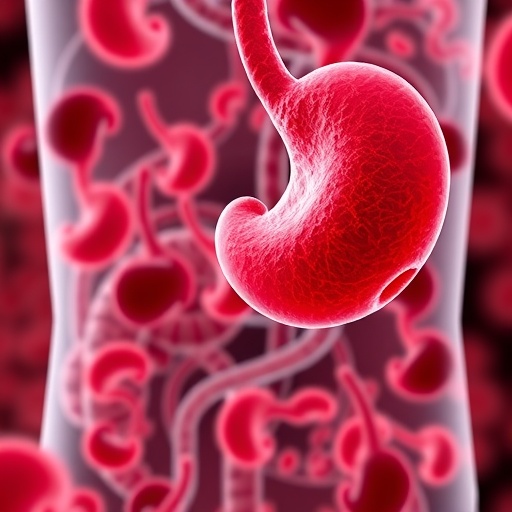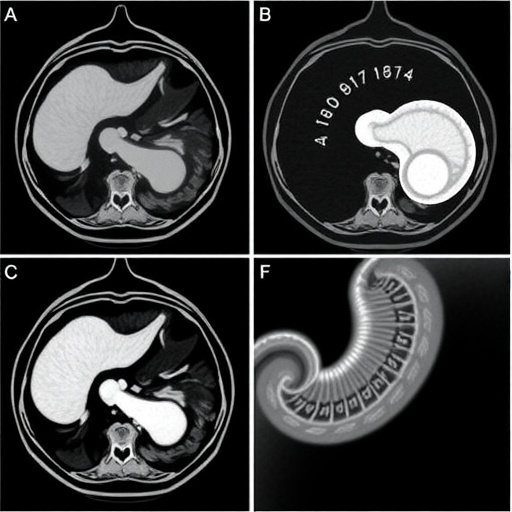A groundbreaking prospective study has unveiled a novel approach to predicting anemia severity in advanced gastric cancer (AGC) patients undergoing anti-tumor therapies, potentially revolutionizing how clinicians manage this frequent and debilitating complication. Current anemia diagnostics largely rely on hemoglobin measurements, a reactive method that often identifies anemia only after it has developed, sometimes too late for optimal intervention. This new research instead spotlights erythrocyte lifespan (ELS) as a predictive biomarker, offering a proactive strategy to identify patients at risk of moderate to severe anemia well before clinical symptoms manifest.
The study, conducted between October 2023 and October 2024, enrolled 56 AGC patients specifically selected based on stringent inclusion criteria. Employing Levitt’s carbon monoxide (CO) breath test, researchers non-invasively measured ELS at the bedside, leveraging the physiological principle that endogenous CO production correlates with red blood cell turnover. The breath test’s innovation lies in its simplicity and rapidity, making it a feasible tool for routine clinical application, contrary to more invasive and cumbersome traditional assays.
Statistical correlations revealed that ELS maintained a significant positive relationship with foundational hematologic parameters such as hemoglobin concentration, hematocrit, and mean corpuscular hemoglobin concentration (MCHC), alongside patient age. Intriguingly, ELS exhibited a negative correlation with bilirubin levels, an index commonly elevated in hemolytic processes. This pattern underscores ELS’s dual role as both a window into erythrocyte integrity and a marker indirectly reflecting hemolytic stress in treated cancer patients.
Most notably, patients presenting with an ELS shorter than 70 days experienced significantly diminished hemoglobin levels, emphasizing the clinical relevance of erythrocyte turnover dynamics in this population. This cutoff point inspired the application of a receiver operating characteristic (ROC) curve analysis, which demonstrated an area under the curve (AUC) of 0.8946 for ELS in forecasting moderate-to-severe anemia occurring 7 to 21 days post-therapy. This striking predictive capacity highlights ELS measurement as a potential game-changer, conferring nearly 90% accuracy in anticipating anemia severity—a feat that current hemoglobin-centric models cannot match.
The implication of these findings is profound. By integrating ELS assessment into clinical workflows, oncologists can stratify patients based on anemia risk before its manifestation, enabling timely initiation of therapeutics such as erythropoiesis-stimulating agents or iron supplementation. Early intervention not only optimizes patient outcomes by mitigating anemia-related symptoms like fatigue, dyspnea, and cognitive impairment but also reduces the likelihood of treatment interruptions or dose reductions that can compromise oncologic efficacy.
This approach aligns with the paradigm shift in precision medicine—leveraging dynamic physiological markers rather than static endpoints to tailor patient management. It circumvents the reactive “wait-and-see” approach traditionally employed, instead enabling a preemptive stance that may enhance overall treatment adherence and improve quality of life in a vulnerable patient cohort.
The Levitt’s CO breath test employed in this study exemplifies the broader trend towards non-invasive diagnostic innovations. By quantifying endogenous CO, researchers directly infer erythrocyte catabolism rates, sidestepping the need for frequent venipuncture. This simplicity could accelerate widespread adoption, especially in resource-limited settings where frequent laboratory monitoring is impractical.
While the study is pioneering in its focus, it naturally invites further inquiry. Larger, multi-center trials are warranted to validate these findings across diverse demographic and clinical contexts, ensuring robustness and generalizability. Additionally, mechanistic studies exploring the interplay between anti-tumor agents and erythrocyte lifespan at the molecular level could illuminate potential therapeutic targets to preserve red blood cell integrity during cancer treatment.
Moreover, integrating ELS measurement with emerging biomarkers, such as circulating erythroid progenitor counts or inflammatory cytokine profiles, could refine risk models, accounting for the multifactorial nature of cancer-associated anemia. This multiparametric approach could herald a new era of anemia management in oncology, combining predictive accuracy with therapeutic precision.
The trial was retrospectively registered at the China Clinical Trials Registry (ChiCTR2500097950) in February 2025, embodying rigorous adherence to clinical research standards. The research team utilized GraphPad Prism 9.0.0 for data analysis, ensuring statistically sound interpretations of the correlations and predictive models.
In essence, this seminal study transitions anemia management from a purely reactive framework centered on hemoglobin monitoring to a predictive, physiology-based model emphasizing erythrocyte lifespan. This innovative paradigm promises not only to improve anemia outcomes but also to fortify the continuity of anti-tumor therapies by pre-empting their hematologic complications.
As the oncology community grapples with the multifaceted challenges of cancer treatment, such advances signify hope for more refined, patient-centered care. Early identification and intervention for anemia could mitigate a major source of morbidity, enabling patients to better tolerate aggressive treatments and potentially improving survival metrics.
Furthermore, the practicality and non-invasiveness of the ELS measurement technique grant it potential for integration into routine oncology clinics worldwide. Its bedside applicability could democratize access to sophisticated anemia risk stratification, leveling the field in both advanced academic centers and community settings alike.
This prospective proof-of-concept heralds a critical step forward in oncologic supportive care. By leveraging a fundamentally physiological parameter, erythrocyte lifespan, clinicians gain a powerful tool to anticipate and avert treatment-associated anemia, transforming patient trajectories in advanced gastric cancer and potentially beyond.
The study’s implications reverberate beyond gastric cancer, suggesting erythrocyte lifespan measurement could evolve into a universal adjunct across oncology disciplines where treatment-induced anemia is prevalent. Continued innovation and validation will determine the full scope of its clinical utility.
In conclusion, Yu, Su, Lu, and colleagues’ research offers compelling evidence that erythrocyte lifespan is not merely a passive hematologic marker but an active predictive biomarker capable of shaping the future of anemia management in advanced gastric cancer. This breakthrough provides the foundation for dynamic, preemptive, and personalized anemia care in oncology’s complex landscape.
Subject of Research: Predictive value of erythrocyte lifespan in anemia development following anti-tumor treatment in advanced gastric cancer patients.
Article Title: Erythrocyte lifespan for predicting moderate and severe anemia in advanced gastric cancer patients post-anti-tumor therapeutics: a prospective study.
Article References:
Yu, X., Su, L., Lu, R. et al. Erythrocyte lifespan for predicting moderate and severe anemia in advanced gastric cancer patients post-anti-tumor therapeutics: a prospective study. BMC Cancer 25, 1791 (2025). https://doi.org/10.1186/s12885-025-15266-7
Image Credits: Scienmag.com
DOI: 10.1186/s12885-025-15266-7 (Published 19 November 2025)
Keywords: erythrocyte lifespan, anemia prediction, advanced gastric cancer, anti-tumor therapeutics, Levitt’s CO breath test, hematologic biomarkers, prognosis, oncology supportive care, hemoglobin, erythropoiesis-stimulating agents
Tags: advanced gastric cancer managementanemia in gastric canceranti-tumor therapy complicationschronic illness anemia predictionclinical intervention strategieserythrocyte lifespan predictionhematologic parameters correlationhemoglobin measurement limitationsLevitt’s CO breath testnon-invasive anemia diagnosticspredictive biomarkers in oncology





